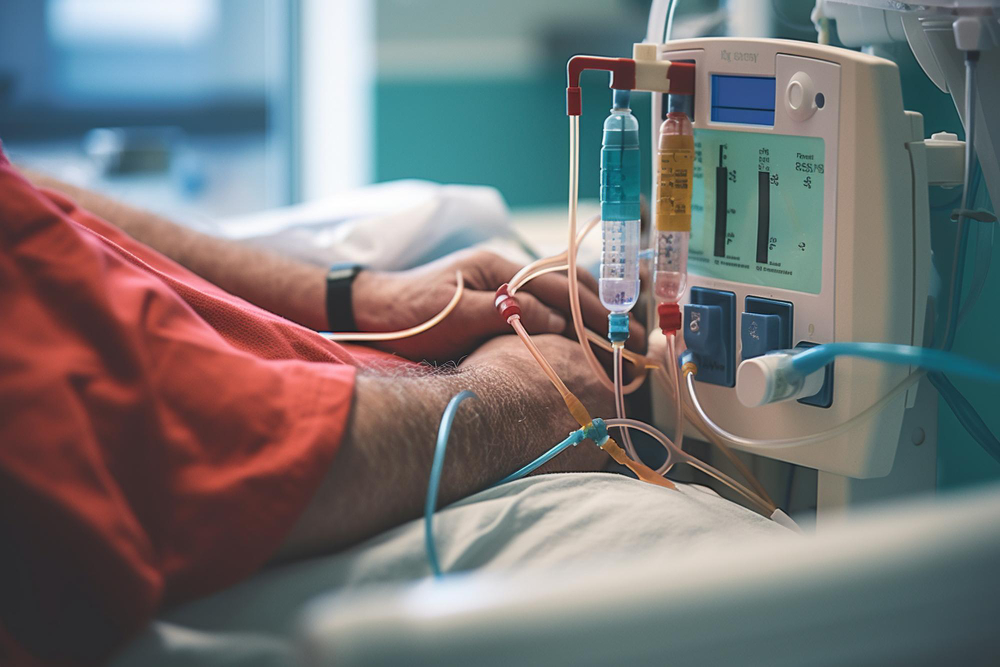Dialysis is crucial for those whose kidneys can no longer effectively clean their blood. This procedure acts as a substitute for healthy kidney function, allowing individuals with kidney failure to lead more comfortable lives. This blog aims to explain dialysis in an easy-to-understand manner. We’ll look at how this life-saving procedure works, its importance, and how it significantly enhances the quality of life for those with severe kidney issues.
Comprehensive Overview of Dialysis
Understanding the role of healthy kidneys is vital. Unlike what many might think, kidneys do more than just make urine. Healthy kidneys filter and remove waste, excess water, and salt from the blood. They help balance chemicals like potassium and sodium, and they also regulate blood pressure. However, when kidneys fail, these essential roles are disrupted, causing a buildup of harmful waste and fluids in the body, leading to severe health issues. This is where dialysis steps in as a substitute.
A Brief History of Dialysis
Dialysis isn’t a new invention. It began during World War II, providing hope when medical options were limited. Early machines were basic, but they laid the groundwork for future developments. Fast forward to today, and the dialysis machine is a sophisticated tool able to mimic kidney functions closely, improving patient outcomes significantly.
Types of Dialysis
There are two primary types of dialysis: hemodialysis and peritoneal dialysis.
- Hemodialysis: This process involves circulating the patient’s blood through a dialysis machine. The machine cleans the blood using a filter before returning it to the body. This typically happens about three times a week at a clinic or dialysis center, with each session lasting several hours.
- Peritoneal Dialysis: Unlike hemodialysis, this type uses the lining of your abdomen as a filter. A special solution goes into the abdomen, attracting waste and excess fluids, which are then drained away. Peritoneal dialysis can often be performed at home, giving patients more flexibility.
Both methods aim to rid the body of waste and maintain important chemical levels. Opting for one over the other depends on various factors, including medical advice, lifestyle, and personal preference. Understanding these differences helps patients make informed choices about their treatment.
Patient Stories and Expert Insights
Hearing from those who experience dialysis puts a real-world perspective on the procedure. Take the story of Emily, a young mother who balances her routine with dialysis treatments. Despite initial struggles, she adapted to her new normal, fitting her treatments into her family life with a supportive dialysis team by her side.
- Daily Routine: Patients like Emily often describe their dialysis days as structured but manageable. They plan around their sessions, ensuring they have time to rest and recuperate post-treatment.
Diet plays a critical role during dialysis. A dialysis diet involves careful monitoring of food intake to maintain ideal potassium and sodium levels. Staying hydrated without overloading the body with fluids is also key. This diet is vital for optimizing dialysis treatment effectiveness.
Expert insights also play a pivotal role in guiding patients. Nephrologists and dialysis technicians emphasize the importance of patient education. They explain procedures, provide support, and dispel common myths. For instance, many incorrectly believe dialysis complications are inevitable. While challenges exist, most patients experience few serious issues with proper care and monitoring.
Improving Accessibility and Awareness
Accessibility to dialysis treatments varies significantly, especially in countries like India. Urban areas often have better facilities, while rural regions face more challenges, including limited access to dialysis machines and clinics.
Here are some common challenges patients face: – Lack of dialysis centers in remote parts – High costs of treatments – Insufficient public understanding of dialysis
However, efforts to improve this are ongoing. Organizations are working to enhance support and accessibility. Affordable healthcare initiatives and educational programs aim to broaden understanding and availability of dialysis.
Promoting awareness about kidney health is equally crucial. Educating communities can prevent diseases that lead to kidney failure, reducing reliance on dialysis. By advocating for healthier lifestyles and regular check-ups, we can contribute to a healthier society.
In summary, dialysis is more than a procedure—it’s a pathway to a healthier life for those with kidney failure. Understanding its workings, the impact on patients’ lives, and the current healthcare landscape helps us better appreciate its significance. As we learn and support those affected, we move closer to a world where everyone has access to the dialysis treatment they need.

